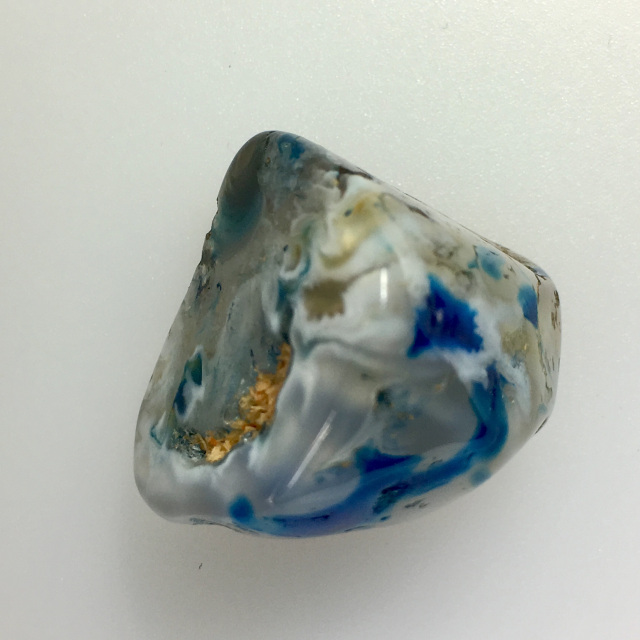- Fabric (by the yard)
- >
- Blue Agate GEO 3341
Blue Agate GEO 3341
SKU:
$92.00
89
92
$89.00 - $92.00
Unavailable
per item
Fabric by the Yard
Blue Agate
Origin - Unknown
GEO 3341
Blue Agate
Origin - Unknown
GEO 3341
It's super cool how agates are formed! Just look at the layers... that's time (millions of years of time) and heat (hot hot hot), pressure, volcanic stone and water. And what is created is pretty incredible!
The best agates are found in basalt, a young volcanic rock. Volcanic rocks erupt to the surface and harden containing a lot of water and carbon dioxide, which will bubble out, leaving a rock with holes! An agate starts in the cavity, a void in the rock. Water containing silica percolates through the holes and leaves layers onto the walls of the rock. The characteristic banding pattern and colors of the agate come from trace elements like iron or manganese.
Agates invariably outlast their surroundings (the volcanic stone that it's hidden inside). The encasing rock—or bone—weathers away, leaving just a roundish, rough-coated lump waiting to be picked up and cut and polished.
By the way, if you love agate hunting... head up into Northern Minnesota to the north shore of Lake Superior. Take a bucket!
This image is for illustrative purposes only.
The colors shown are accurate within the constraints of lighting, photography and the color accuracy of your screen.
All of our images are of our own stone; cut and polished, exposing the natural beauty inside.
(All photos shown may be watermarked for online viewing. The purchased art will not show watermark.)
©Light the Earth, All Rights Reserved
Copyrighted. No Usage Without Permission
The best agates are found in basalt, a young volcanic rock. Volcanic rocks erupt to the surface and harden containing a lot of water and carbon dioxide, which will bubble out, leaving a rock with holes! An agate starts in the cavity, a void in the rock. Water containing silica percolates through the holes and leaves layers onto the walls of the rock. The characteristic banding pattern and colors of the agate come from trace elements like iron or manganese.
Agates invariably outlast their surroundings (the volcanic stone that it's hidden inside). The encasing rock—or bone—weathers away, leaving just a roundish, rough-coated lump waiting to be picked up and cut and polished.
By the way, if you love agate hunting... head up into Northern Minnesota to the north shore of Lake Superior. Take a bucket!
This image is for illustrative purposes only.
The colors shown are accurate within the constraints of lighting, photography and the color accuracy of your screen.
All of our images are of our own stone; cut and polished, exposing the natural beauty inside.
(All photos shown may be watermarked for online viewing. The purchased art will not show watermark.)
©Light the Earth, All Rights Reserved
Copyrighted. No Usage Without Permission



